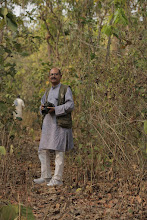When I returned to Gujarat after eight years, in June 2002, the muddy water of the Sabarmati River had already turned bloody. The sword of the Saffron Brigade had drawn enough blood from Muslim men, women and children to redden the azure blue water of the Narmada that had been fed into the Sabarmati.
The Sangh Parivar, comprising the Rashtriya Swayamsevak Sangh (RSS), the Vishwa Hindu Parishad (VHP), the Bajrang Dal and the Bharatiya Janata Party (BJP), had exploded the saffron bomb successfully in Gujarat to prove before the world that Mahatma Gandhi, the apostle of peace and non-violence, can be defeated in his own home land.
The Sangh Parivar had been preparing to wage a war against the humanity since 1920 when its ideologue Savarkar propounded the theory of 'Hindurashtra' (Hindu nation). When in 1947, their dream to convert India into a Hindurashtra failed, the Sangh Parivar contracted Nathuram Godse to kill Gandhi, who symbolized universal brotherhood.
The next assault on secular India was made on December 6,1992 when a fifteenth century mosque was razed to the ground by a fanatic mob, a section of which had been trained in demolition techniques in a camp in Gujarat.
Having covered Gujarat as a journalist for over two decades, I was a witness to the Sangh Parivar's Fascist methods and its devastating effects on the life and psyche of the people. I will try here to trace the roots of fascism that culminated in the genocide of 2002.
Tuesday, November 20, 2007
When It Rained Blood - Introduction
Subscribe to:
Post Comments (Atom)

1 comment:
Good words.
Post a Comment